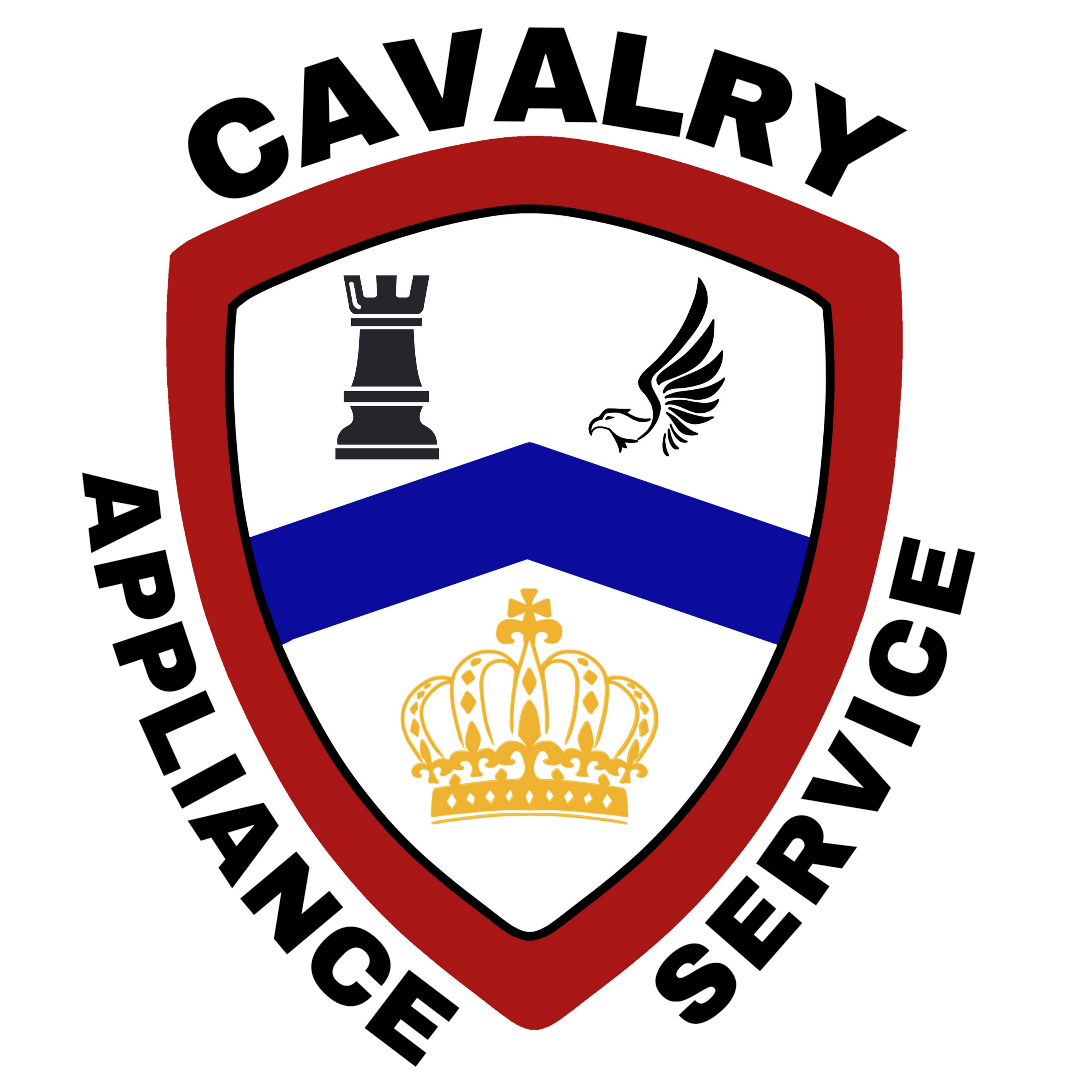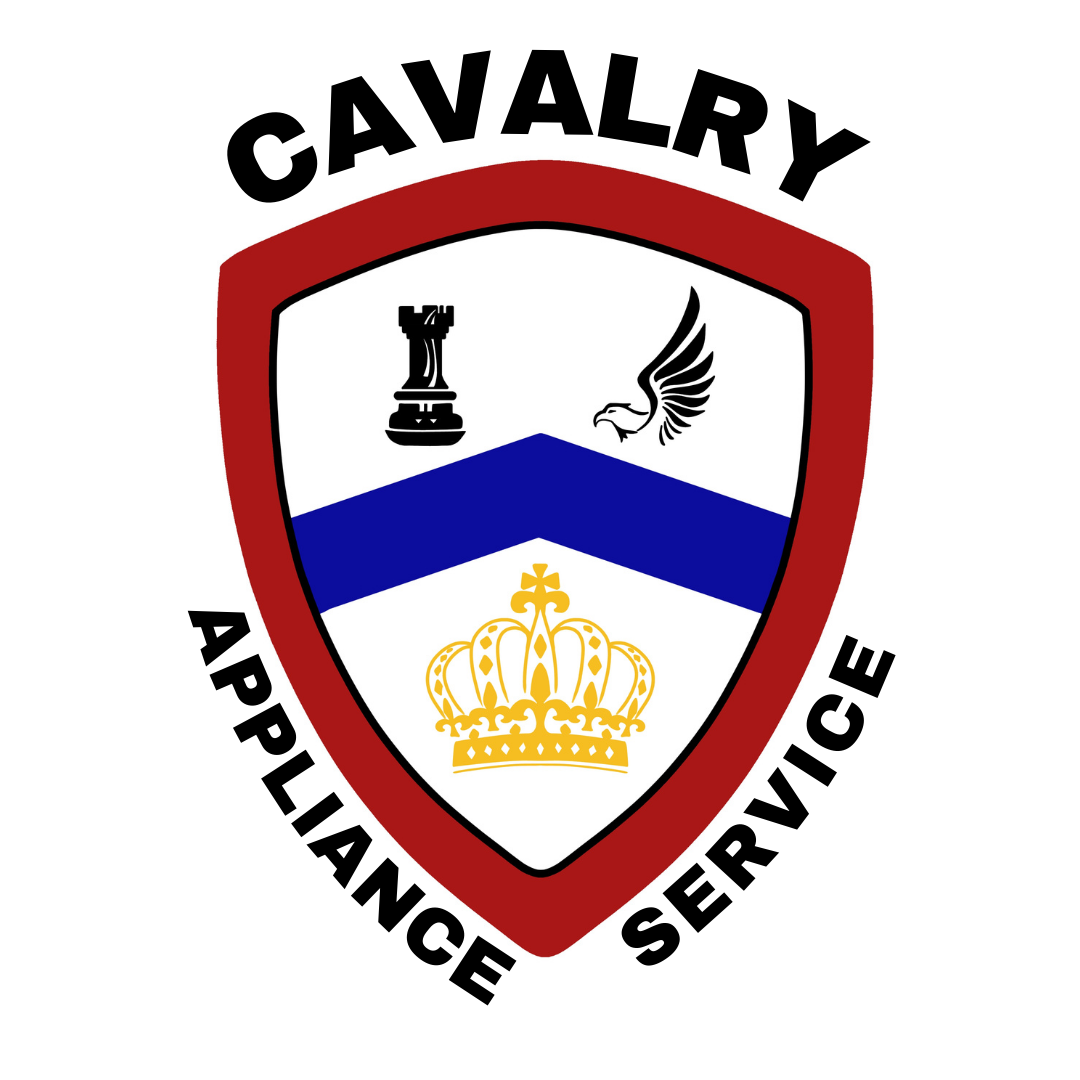Help! My Icemaker Stopped Working!
Woohoo! It’s cookout season. Summer parties, backyard BBQs, company picnics, vacation, all the beautiful and fun summer activities. And, your icemaker is your friend!
Untill it isn’t.
It’s never convenient when your icemaker breaks, but when it breaks in the summer time, it’s a real bummer! So, we thought we’d give you a few pointers about the top five issues we see, how you can quickly identify them, what you can try before calling us (which can save you the cost of a service visit, approximately $109-$159 +tax), and when to hit the Cavalry Appliance Service speed dial- 252-772-1254.
First, here’s the scoop on how an icemaker works:
An icemaker is essentially a miniature factory within your freezer, designed to produce ice cubes automatically. It operates through a series of mechanical and electrical processes, all synchronized to produce ice efficiently and reliably. Of the several methods for ice production available for manufacturers of appliances, one of the most common is the following:
The journey begins with a reliable water source. Icemakers are typically connected to your home’s plumbing system via a small water line, which feeds water into the icemaker, ensuring a consistent supply for ice production. A water filter is often included to ensure the water used is clean and free of impurities.
The icemaker’s control module activates the water valve, allowing a measured amount of water to flow into the ice mold. This mold is usually a series of connected cavities, shaped to produce the familiar ice cubes we use. Once the mold is filled, the water needs to freeze. The icemaker works in tandem with the freezer’s cooling system, maintaining the necessary sub-zero temperatures. As the water sits in the mold, it gradually freezes into solid ice cubes, a process that can take anywhere from 60 to 90 minutes, depending on the freezer’s temperature settings and the icemaker’s efficiency.
When the water has frozen completely, it’s time for the icemaker to harvest the ice cubes. The control module activates a heating element beneath the mold, which warms the bottom of the ice mold slightly, loosening the ice cubes just enough so they can be released. A motor-driven arm then sweeps across the mold, pushing the ice cubes out of the mold and into the storage bin below.
The entire process repeats, ensuring a continuous supply of ice cubes. With the ice cubes successfully harvested, the icemaker prepares for the next batch. The control module signals the water valve to open again, refilling the mold with water.
Whether you’re hosting a party, preparing for a family gathering, or just trying to get through a hot day, dealing with a broken icemaker is never fun. Let’s dive in to some common failures:
1. Icemaker Not Making Ice
When your icemaker is not making ice, you can identify this failure by several key signs. First, you will notice that there is no ice in the ice bin. Additionally, the sound of water filling the tray will be absent, indicating a problem with the water supply. Another indicator is a blinking error light or no light at all on the icemaker, signaling that the unit is experiencing an issue that needs attention.
How to Prevent This Failure:
Check the water supply line for kinks or blockages.
Change the water filter every six months.
Ensure the freezer temperature is set between 0°F and 5°F.
Steps to Remedy the Failure:
Verify the water supply line is connected and not blocked.
Inspect the water inlet valve for functionality.
Reset the icemaker by turning it off and on again.
If these steps don’t work, it’s time to call Cavalry, as it could be an electrical or mechanical failure.
2. Ice Cubes Are Too Small or Misshapen
When ice cubes are too small or misshapen, you can identify this failure by noticing several telltale signs. The ice cubes will be smaller than usual, often irregularly shaped or hollow. Additionally, the ice bin will have an uneven amount of ice, indicating that the icemaker is not producing ice consistently or correctly.
How to Prevent This Failure:
Ensure the water supply pressure is adequate (typically 20-120 psi).
Regularly replace the water filter.
Check for proper alignment of the ice maker’s water fill system.
Steps to Remedy the Failure:
Adjust the water pressure if it’s too low.
Replace the water filter if it’s clogged.
Inspect the water fill system and ensure it’s correctly positioned.
If the problem persists, schedule a service visit from a Cavalry Appliance professional to check for issues with the water inlet valve or the icemaker’s motor.
3. Icemaker Leaking Water
When an icemaker is leaking water, you can identify this failure through several noticeable signs. Puddles of water may appear inside the freezer or under the refrigerator, indicating a leak. Additionally, you might find ice clumps or sheets of ice forming in the ice bin, which suggests excess water is present. Another clear sign is water dripping from the icemaker unit itself, pointing to a potential issue with the water supply or internal components.
How to Prevent This Failure:
Ensure the icemaker is level and properly installed.
Inspect the water supply line for leaks or damage.
Keep the freezer temperature consistent to prevent ice melt and refreezing.
Steps to Remedy the Failure:
Tighten any loose connections in the water supply line.
Replace any damaged or leaking water lines.
Adjust the freezer’s temperature to ensure it’s not too warm.
If these steps don’t solve the problem, a professional Cavalry Appliance technician can inspect and replace faulty components like the water inlet valve or fill tube.
4. Icemaker Producing Discolored or Bad-Tasting Ice
When an icemaker is producing discolored or bad-tasting ice, you can identify this failure by several distinct signs. The ice cubes may appear cloudy, yellow, or have a strange odor. Additionally, drinks will taste off when the ice is added, indicating contamination or impurities. Another clear indicator is an unpleasant smell coming from the ice bin, suggesting that the ice is not clean or fresh.
How to Prevent This Failure:
Replace the water filter every six months with an Original Equipment Manufacturer (OEM) water filter compatible with your icemaker.
Clean the ice bin and the icemaker unit.
Steps to Remedy the Failure:
Replace the water filter immediately.
Thoroughly clean the ice bin and icemaker with a mixture of water and baking soda.
Run several cycles to flush out old, discolored ice.
If the issue persists, one of our professionally trained technicians can inspect the water supply line for contaminants or other issues.
5. Icemaker Jammed or Not Dispensing Ice
When an icemaker is jammed or not dispensing ice, you can identify this failure through several key signs. The icemaker will make ice, but it doesn’t dispense any. You might hear the motor running, but no ice comes out, indicating a blockage. Additionally, the dispenser chute may be blocked or frozen over, preventing ice from being released.
How to Prevent This Failure:
Check and clear the dispenser chute of any ice blockages.
Avoid overfilling the ice bin to prevent jams.
Keep the ice bin and dispenser clean to prevent ice from sticking.
Steps to Remedy the Failure:
Clear any visible ice blockages in the dispenser chute.
Remove and empty the ice bin, then replace it correctly.
Ensure the dispenser’s motor and auger are functioning properly.
If these steps don’t resolve the issue, give us a call so we can diagnose and repair any motor or electrical problems.
We care!
Dealing with a broken icemaker can be a hassle, but understanding the common failures and how to address them can save you time and frustration. By regularly maintaining your icemaker and taking preventive measures, you can avoid many of these issues. However, some problems require professional attention. Knowing when to call a technician can help ensure your icemaker gets back to optimal performance quickly. The good news is that, during any ice-maker down time, alternative solutions like using ice trays or purchasing bagged ice are readily available.
Here’s to a fun-filled and cool summer!
Your Cavalry Appliance Service Team

